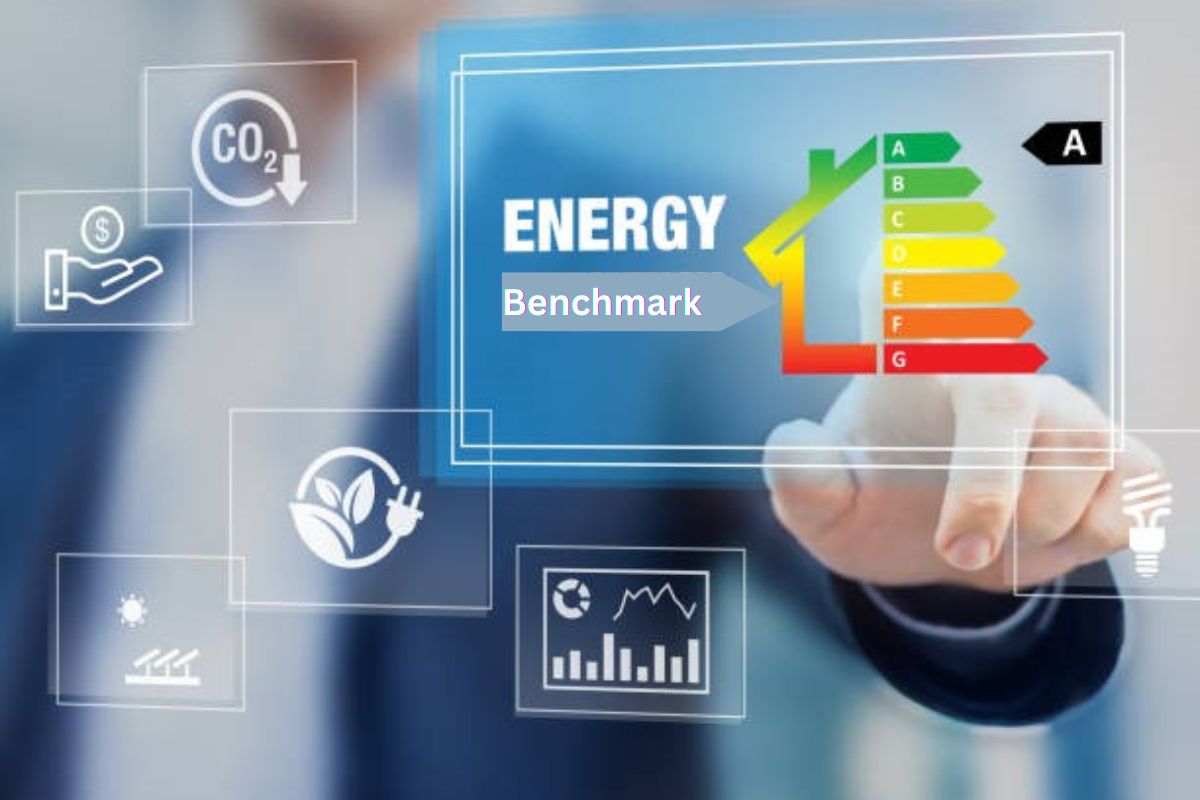Every once in a while, a game-changer emerges in the world of business, altering the way we approach profitability and growth. Today, as we stand at the intersection of business and sustainability, ‘Energy Benchmarking’ is that game-changer. But how does it work? And how can it become the secret sauce to boost your return on investment (ROI)? Let’s embark on this journey of transformation, where we’ll unveil not only what Energy Benchmarking is, but also how it can become your compass to navigate toward higher ROI. Buckle up, and let’s dive in.
Unpacking the Concept of Energy Benchmarking
Energy Benchmarking is a process of comparative evaluation. It involves measuring your building’s energy use against that of similar buildings or a standard reference to gauge its relative performance. This metric serves as a tool to better manage energy consumption, pinpoint areas for reducing energy costs, prioritize energy upgrades, and track energy performance improvements over time.
An underperforming building, from an energy efficiency perspective, could be silently draining your finances. Energy benchmarking acts as a sonar, detecting these ‘invisible’ costs and transforming them into visible savings. It’s about getting a clear picture of where your building stands energy-wise and understanding where improvements can be made.
The Dynamic Interplay Between Energy Benchmarking & ROI
When implemented effectively, Energy benchmarking offers a host of benefits that directly contribute to enhanced ROI. Let’s break this down:
Cost Savings: Energy benchmarking works like a flashlight in a dark room, highlighting energy consumption hotspots and inefficient areas that are ripe for energy savings. Given that utilities often constitute a large chunk of building operation costs, energy conservation can lead to significant monetary savings. These savings manifest as a direct boost to your ROI.
Increased Property Value: Energy-efficient buildings enjoy a competitive edge in the rental and sales markets. They invariably command higher value. A study by *Costar* revealed that Energy Star-certified buildings enjoy a price premium of approximately 10% over their non-certified counterparts. This higher valuation can also contribute to a higher ROI.
Risk Management: Understanding a building’s energy consumption pattern can offer a degree of protection against future energy price hikes and market volatility, thereby supporting risk management efforts. A sustainable business is a more resilient one, better prepared to face the uncertainties of the future.
Regulatory Compliance: Several cities worldwide have already implemented energy benchmarking ordinances, with others considering similar regulations. Proactive implementation of energy benchmarking will keep your organization ahead of the curve and ensure regulatory compliance, preventing potential fines or sanctions that could negatively impact your ROI.
Implementing Energy Benchmarking
While implementing energy benchmarking could seem overwhelming initially, breaking it down into smaller, manageable steps can simplify the process:
- Gathering Data: The first step involves collecting relevant data. This includes energy bills, as well as operational and occupancy data for the property.
- Identifying a Benchmark: The next step is identifying the energy performance metrics that are most relevant to your property or portfolio. Different types of buildings might require different metrics, so choose wisely.
- Analyzing and Comparing Data: Use energy performance tools, such as EPA’s Energy Star Portfolio Manager, to compare your building’s energy usage with similar buildings or industry standards. This step helps identify where you stand and what you’re aiming for.
- Implementing Energy Efficiency Measures: With the benchmarking data in hand, you can prioritize investments in energy efficiency measures. These might include upgrading HVAC systems, improving insulation, or implementing energy management systems.
- Regular Review: Benchmarking is a continuous process, not a one-time task. Regularly review your energy performance to ensure continuous improvement and maintain the savings momentum.
Overcoming Roadblocks
Sure, diving into energy benchmarking might seem daunting, but hey, every superhero faces their kryptonite. Here are a few roadblocks you might encounter and how to tackle them:
Budget Constraints: Money talks, right? But fear not, sometimes small changes can lead to big savings. Start with low-cost adjustments like fixing leaks or installing programmable thermostats.
Lack of Data: Don’t sweat it if your data isn’t perfect initially. Start with what you have and build from there. Trust me, even rough data can shine a light on potential areas to save.
Resistance to Change: Change is scary, I get it. But when you show your team the benefits—lower bills, better efficiency, a greener footprint—they’ll jump on board faster than you can say “energy savings.”
The Future is Bright with Energy Benchmarking
In our fast-paced, ever-evolving business landscape, energy benchmarking is quickly emerging as a necessary tool for every organization. As sustainability becomes an increasingly important aspect of business, organizations are realizing the enormous potential hidden in energy benchmarking.
Implemented effectively, energy benchmarking can not only reduce your operational costs significantly, but can also bolster profitability and business resilience. A well-executed energy benchmarking strategy can furnish your business with a meaningful competitive advantage, sending your ROI soaring.
In conclusion, energy benchmarking presents a strategic, forward-thinking approach to operational efficiency. It can help your organization save money, boost performance, and increase market competitiveness. Unleashing the power of energy benchmarking can truly skyrocket your ROI, turning energy management from a routine operational task into a strategic growth enabler. So, when will you harness the potential of energy benchmarking to boost your ROI? The future awaits.









[…] These regulations require property owners and managers to accurately measure and report their energy and water usage, as well as associated emissions. EBEWE compliance is not just a legal obligation; […]
January 10, 2024 at 11:16 am